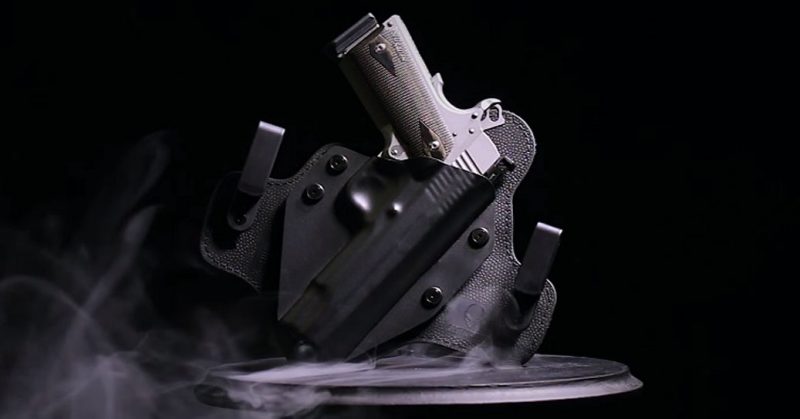War History Online presents this guest article by Sam Hoober, contributing editor for Bigfoot Gun Belts and Alien Gear Holsters.
There were a number of WWII handguns employed by the various armed forces involved in that conflict, and examples can be obtained to this day. You wouldn’t necessarily want to shoot all of them, though. Some are incredibly rare, some have been out of production for so long that you couldn’t replace parts if you wanted to.
Some guns are very difficult to get ammunition for – good luck finding 8x22mm Nambu, for instance – but some WWII pistols CAN easily be supplied. To that end, here are 7 WWII pistols you can easily find, buy and shoot.
Walther P38
A Luger is cooler, but you don’t need to part with an arm, a leg and your firstborn to put a Walther P38 in the safe. The P38 is also a more significant firearm in terms of design.
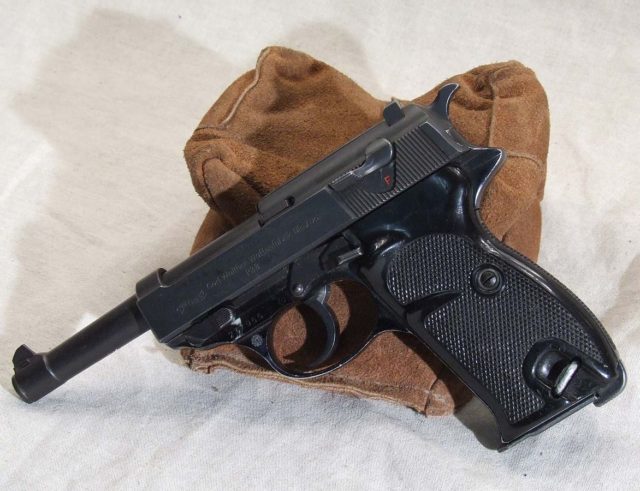
The P38 was designed to replace the Luger P08, which was complicated and expensive. Walther adapted the double/single-action mechanism of the PPK for a service pistol and the 9x19mm cartridge, though the fixed-barrel blowback design was discarded in lieu of a short-recoil, locked-breech falling-block barrel and dual recoil springs. Like the PPK, the safety was located on the slide which decocks and places the pistol on safe. This allowed for double-action carry with the safety on or off.
After World War II, production continued into the 1960s, though P38 pistols would remain in service with various police forces and militaries until the 1990s. The design made its mark as well; a number of other gun makers copied the slide-mounted decocking safety design and thus the “double-action first shot” carry setup for a DA/SA pistol. Smith and Wesson’s Model 39 (and descendants), the Beretta 92 and Hechler and Koch’s double-action pistols (and others) all employ virtually the same safety mechanism, which is a testament to how well Walther designed the pistol.
M1917 Revolver
The M1917 revolver was conceived as a stop-gap when production of 1911 pistols couldn’t keep up with the demand for them during WWI, and they were issued to a limited number of troops and ancillary personnel during World War II. There are two primary designs, both with some minor differences since the M1917 was produced by both Smith and Wesson and Colt.
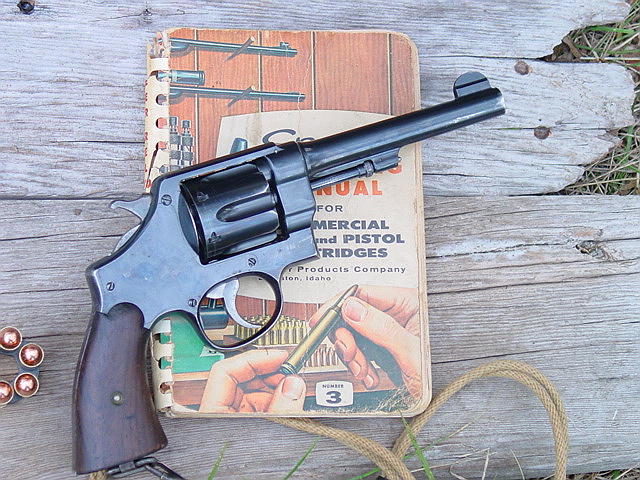
In both cases, the large-frame revolver platform made by both companies was adapted to fire .45 ACP. In the case of Colt, the M1917 was a modified Colt New Service, and in the case of S&W, a modified Hand Ejector, from their N-frame platform. In both cases, the cylinder was machined so the rimless .45 ACP could be fired, though early Colt examples would not fire without the use of half-moon clips. Later versions of the Colt M1917 and the entire run of the S&W would both fire .45 ACP without moon clips, but rounds would have to be manually extracted by poking them with a pencil or similar object.
Today, you can shoot either pistol using .45 ACP with moon clips, or you can use .45 Auto Rim and don’t have to bother. Both models are long since out of production, but the beauty parlor is that .45 ACP is a low-pressure round. Provided good care, many decades of use are very feasible. For that, you get a big-bore revolver equally capable of big bullet plinking or personal defense as well as collecting.
Just remember: Colt’s cylinder release pulls back, Smith and Wesson’s pushes forward.
Walther PPK
As it happens, the Walther PPK (also PPK/S or PP) or Pistole Polizei was a WWII gun as well. The Germans issued them to pilots, officers, military police and party bigwigs. Hitler shot himself with a PPK, so in that regard, no other pistol design has done more good for the world.
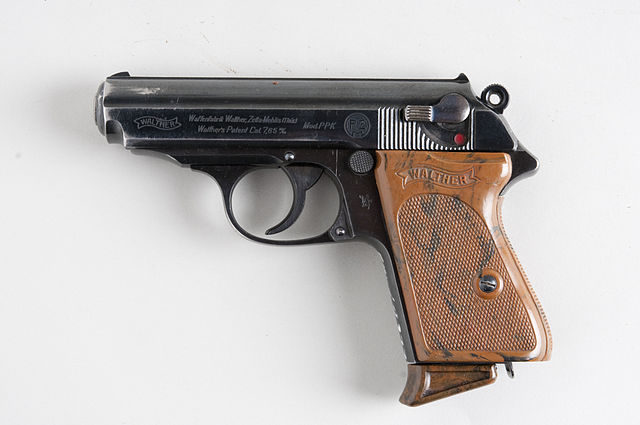
You can try finding a WWII PP, but they are exceedingly rare. That said, it’s a WWII gun that’s still in production.
Today’s model is no longer chambered in .32 ACP or 9×18 Ultra, so your choices are .22 LR or .380. That said, it’s still one of the most popular concealed carry pistols of all time.
Webley Mark VI
The Mark VI entered service during World War I and remained in service until just after World War II. A great many were produced and they’re fairly available.
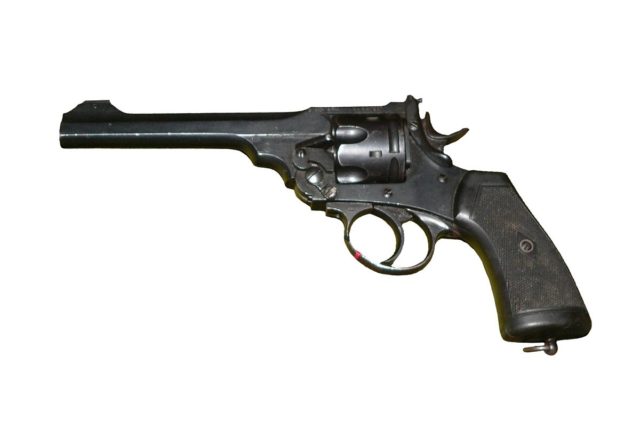
The Webley is a top-break revolver, much like the Smith and Wesson Model 3 and ejects cartridges when opened. The pistols are chambered in .455 Webley, which has similar ballistics to .45 ACP. Just like the M1917, it’s a big-bore service revolver that doesn’t shoot a magnum, making it easy to shoot a big bullet.
A few companies make .455 Webley these days, though a number of Mark VI revolvers had cylinders machined to accept .45 ACP with the use of half-moon clips. There are reports that .45 Auto Rim will work as well. Granted, finding a Webley in great shape is a daunting proposition, as is finding spare parts…but some people just love them.
Smith and Wesson Victory Model
The Smith and Wesson Victory Model revolvers – service revolvers on S&W’s K-frame architecture – were issued through the Lend-Lease program to British, Australian, New Zealand and South African personnel, though chambered for the British .38/200 round. A good number were also produced for American service chambered in good old .38 Special, for issue to air crews, naval personnel and armed guards.
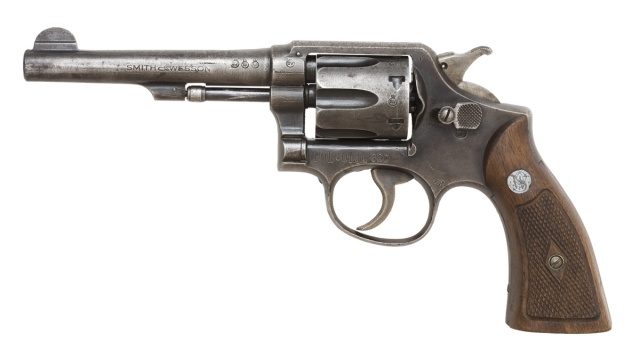
They proved so effective that they remained in issuance to American air crews (including flight crews) until Desert Storm. If you are interested in learning more I wrote an in-depth guide to Smith and Wesson handgun history.
But wait – there’s more! Tired of paying collector prices? You don’t have to! The Victory Model, for those unaware, is literally a Smith and Wesson Model 10, which S&W has been producing without interruption since the 1890s. Brand new Model 10 pistols go for about the same as used Victory Models, though the modern guns are +P rated right out of the box. Given the abundance of .38 Special ammunition, this pistol is good for shooting, collecting and as a home defense or even concealed carry pistol.
The TT-30 Pistol
The Soviet Union fielded a number of sidearms during World War II and World War I, but the TT-30 is the one to acquire over the Nagant revolver. Why would that be, however?
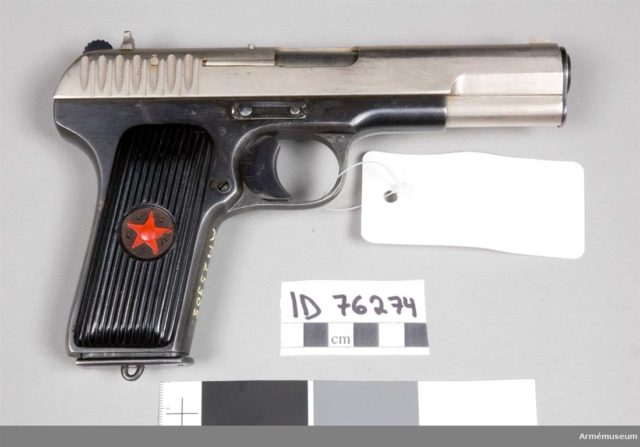
First, like most Soviet handguns, they ripped off someone who knew what they were doing. The TT-30 and TT-33 (a more robust improved model) is based on the Browning 1903, and like most John Browning designs, it worked better than many others of the day.
Both pistols fire oddball calibers that aren’t as easily acquired as, say, .45 ACP or 9x19mm, but the TT-30 fires 7.62 Tokarev, which is a real screamer. The 7.62 Tokarev has muzzle velocities on par with .38 Super and .327 Federal Magnum (muzzle velocities in excess of 1700 fps are not unheard of) making it a small round with a lot of punch.
Said ammunition is still being produced. You probably won’t find it at Cabela’s but you CAN find it.
Lastly, if you get the urge to buy one but don’t want to hunt down a Soviet example, you can look for a Zastava M57, which is currently in production. Century Arms imports them.
The M1911
Last, but certainly not least, is the M1911, as if this wasn’t going to get brought up. We all know the story of how it was made and what happened (John Browning designed it, the Army loved it, it was the sidearm to our armed forces for more than 50 years) and the 1911 has, as a result, become an American icon.
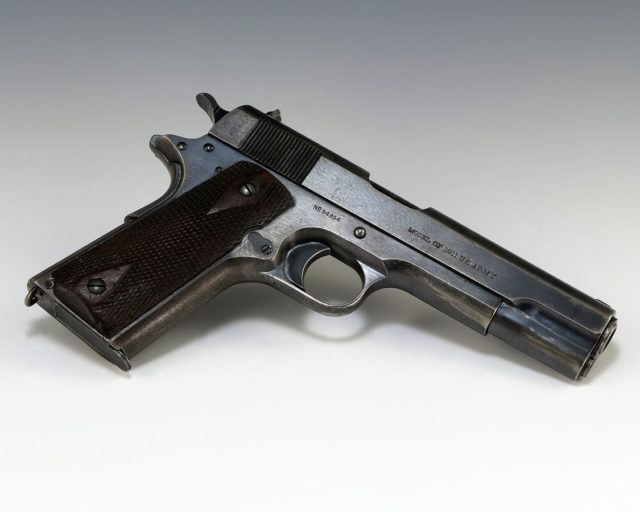
The question when it comes to 1911 shopping is what sort of 1911 you want to buy. Want an actual World War II model? There are plenty of surplus 1911 pistols from that era available. I wrote a lengthy 1911 buyers guide if interested.
Rather have a facsimile of one? Take your pick, because a plethora of companies make GI-spec 1911 pistols. Choose ultra-period pistols with the arched mainspring housing and lanyard or modern takes on the GI-spec pistol such as the Springfield Mil Spec or Remington R1.
There are Government and Commander frames, or Officer frames for easy concealed carry. You can choose chamberings like the classic .45 ACP, 9mm, .40 S&W, and .38 Super. There are imported beaters all the way to custom, match-grade “barbecue guns” that will definitely shoot but are too pretty to do anything but display. There are match-grade race guns for competition, and there are tactical models built for modern special forces and SWAT units.
There are even double-stack 1911s being made. For the poly-striker crowd, Para-Ordnance has even come out with a striker-fired 1911 design. There’s a 1911 for everyone – testament to just how good a design it is.
Author: Sam Hoober, contributing editor for Bigfoot Gun Belts and Alien Gear Holsters.
